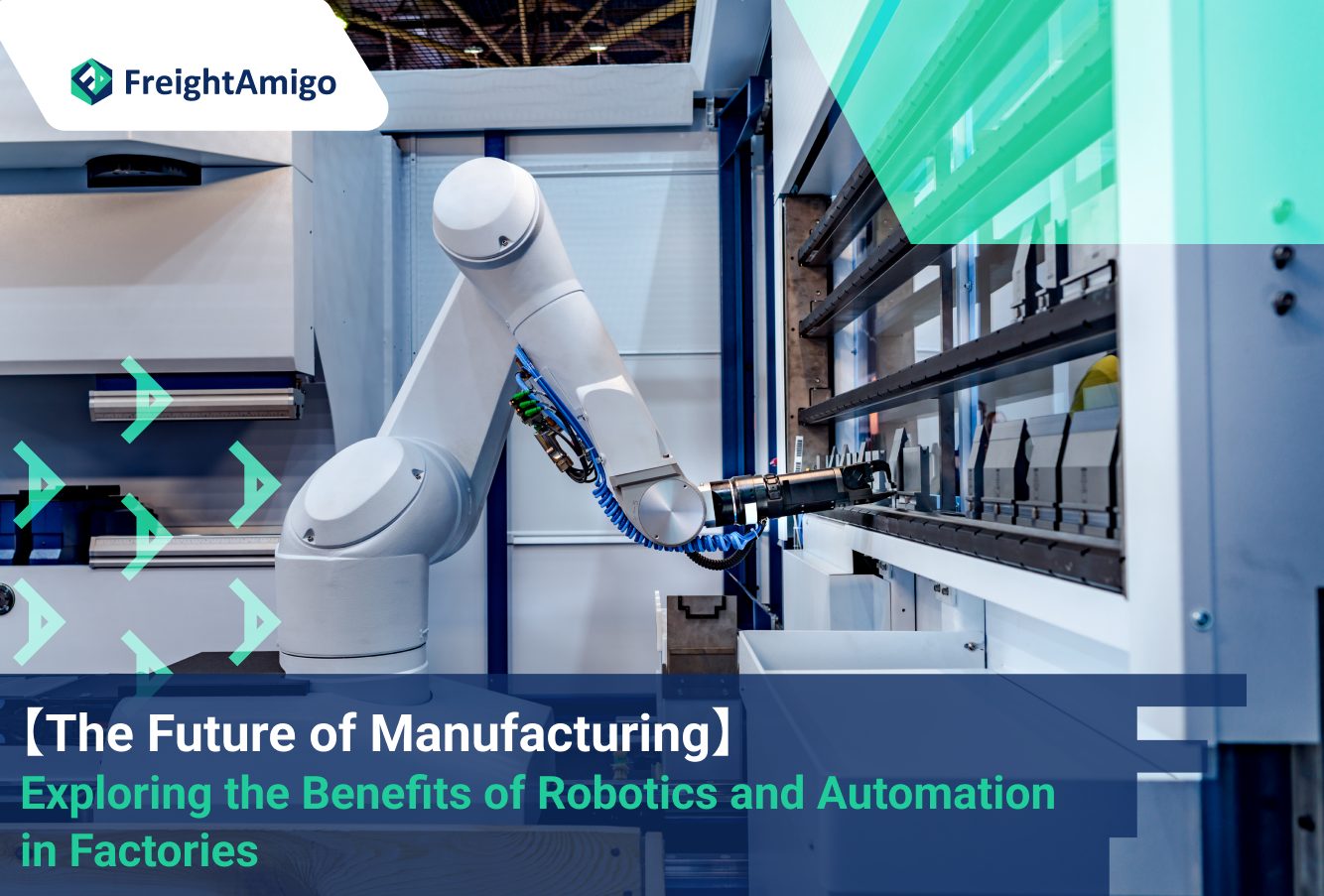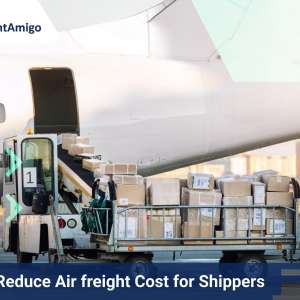The manufacturing industry has undergone significant transformations over the years, with technology playing a pivotal role in driving efficiency and productivity. One of the most groundbreaking advancements in this field is the integration of robotics and automation. Robotics refers to the use of industrial robots to perform various tasks, while automation involves the use of technology to control and monitor manufacturing processes. Together, robotics and automation have revolutionized the manufacturing landscape, offering a plethora of benefits to factories worldwide.
Latest update on 18 March, 2024 by Caspian Ng– Marketing Analyst at FreightAmigo
Want to compare the best Express, Air Freight, Sea Freight, Rail Freight & Trucking rates so as to have better control on cost?
The Benefits of Robotics and Automation in Factories
The adoption of robotics and automation in factories has brought about numerous advantages. Firstly, these technologies enhance efficiency by streamlining manufacturing processes. Industrial robots can perform repetitive tasks with precision and speed, reducing the risk of errors and improving overall productivity. Moreover, automation allows for continuous operation, eliminating the need for breaks and minimizing downtime.
Secondly, robotics and automation play a crucial role in ensuring the safety of workers. By taking over hazardous tasks, such as handling heavy machinery or working in extreme conditions, industrial robots reduce the risk of injuries and accidents. This not only protects workers but also enhances the overall well-being and morale of the workforce.
Additionally, robotics and automation contribute to cost savings in the long run. Although the initial investment may be substantial, the benefits outweigh the costs over time. By optimizing production processes, reducing waste, and increasing output, factories can achieve higher profitability and remain competitive in the market.
The Evolution of Industrial Robots
The evolution of industrial robots has been remarkable. Initially, robots were limited to performing simple, repetitive tasks in controlled environments. However, advancements in technology have led to the development of more sophisticated robots capable of complex operations. Modern industrial robots are equipped with advanced sensors, artificial intelligence, and machine learning capabilities, allowing them to adapt and learn from their surroundings. This evolution has paved the way for the integration of robots in various stages of the manufacturing process, from assembly to quality control.
Industrial robots come in different forms, each designed for specific applications. The most common types of industrial robots used in manufacturing include articulated robots, cartesian robots, SCARA robots, and delta robots. Articulated robots are versatile and have multiple joints, resembling a human arm. Cartesian robots are characterized by their linear movements along three axes. SCARA robots excel in tasks that require high speed and precision, while delta robots are ideal for pick-and-place operations. The variety of industrial robots available ensures that factories can find the perfect solution for their specific needs.
How Robotics and Automation Improve Efficiency and Productivity in Factories
The integration of robotics and automation in factories brings numerous improvements to efficiency and productivity. By automating repetitive tasks, industrial robots eliminate the risk of human error and increase the speed at which processes are completed. This leads to higher production rates and shorter lead times, allowing factories to meet customer demands more effectively.
Moreover, robots can work continuously without breaks, unlike human workers who require rest periods. This ensures that manufacturing processes can run seamlessly, reducing downtime and maximizing output. Additionally, robots can operate in hazardous environments that may be dangerous for human workers, further enhancing productivity.
Automation also enables real-time monitoring and data collection. Through sensors and connected systems, factories can gather valuable insights on production metrics, such as cycle times, defect rates, and energy consumption. This data can be analyzed to identify bottlenecks, optimize processes, and make informed decisions for continuous improvement.
The Future of Robotics and Automation in Manufacturing
The future of robotics and automation in manufacturing is promising. As technology continues to advance, we can expect to see even more innovative applications of robotics in factories. For instance, collaborative robots, also known as cobots, are gaining popularity. These robots can safely work alongside human workers, enhancing productivity and efficiency while maintaining a safe and collaborative working environment.
Furthermore, advancements in artificial intelligence and machine learning will enable robots to learn and adapt to changing circumstances. This will result in more autonomous systems capable of making decisions and performing complex tasks without human intervention. The integration of robots with other emerging technologies, such as the Internet of Things (IoT) and virtual reality, will further enhance the capabilities of robotics and automation in manufacturing.
Training and Education for Robotics and Automation in Manufacturing
To fully leverage the benefits of robotics and automation in manufacturing, adequate training and education are essential. Workers need to acquire the necessary skills to operate and maintain robotic systems effectively. This includes programming, troubleshooting, and understanding the safety protocols associated with working alongside robots.
Educational institutions and training centers play a crucial role in equipping the workforce with the required knowledge and expertise. Offering specialized courses and certifications in robotics and automation, these institutions ensure that workers are prepared for the future of manufacturing. Continuous learning and upskilling will be vital to keep up with the advancements in technology and embrace the full potential of robotics in the industry.
Conclusion: Embracing the Future of Manufacturing with Robotics and Automation
The future of manufacturing is undoubtedly intertwined with robotics and automation. The benefits of these technologies, including enhanced efficiency, improved safety, and cost savings, make them indispensable for factories worldwide. The evolution of industrial robots, coupled with advancements in technology, has paved the way for more sophisticated and capable systems. As we move forward, the integration of robotics and automation in manufacturing will continue to transform the industry, offering endless possibilities for increased productivity and innovation. Embracing these technologies and investing in training and education will be key to staying competitive in the ever-evolving manufacturing landscape.
Explore the possibilities of robotics and automation in your factory today and unlock the potential for increased efficiency and productivity, please go to the FreightAmigo page for inquiries.
Read More:
Maximizing Profits | Fulfillment by Amazon Products Revolutionizing Your Business | FreightAmigo
The Art of Order Fulfillment | Strategies for Success in an E-commerce World | FreightAmigo
Maximizing Efficiency | Crucial Role of Fulfillment Services | FreightAmigo
If you have any inquiries on logistics/supply chain, feel free to contact FreightAmigo now:
Chat with us online | Hotline: +852 28121686 | WhatsApp: +852 27467829









































